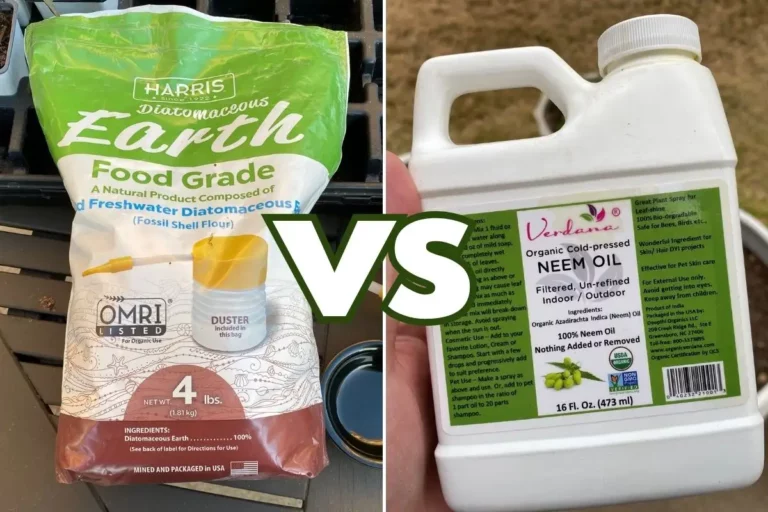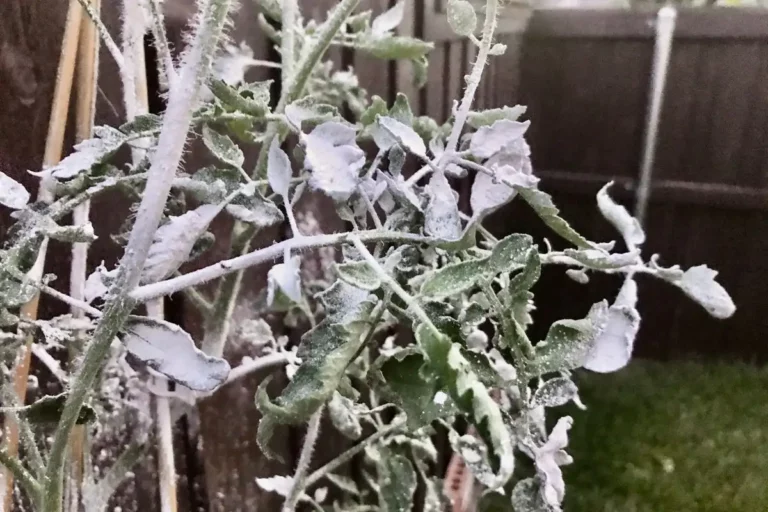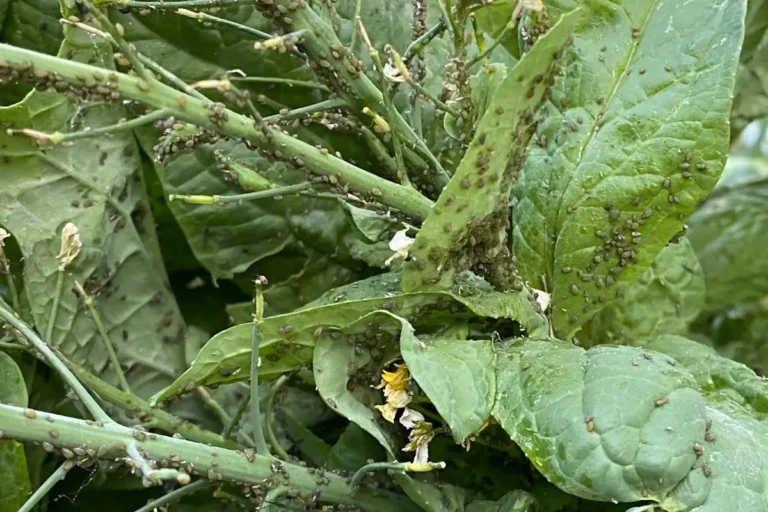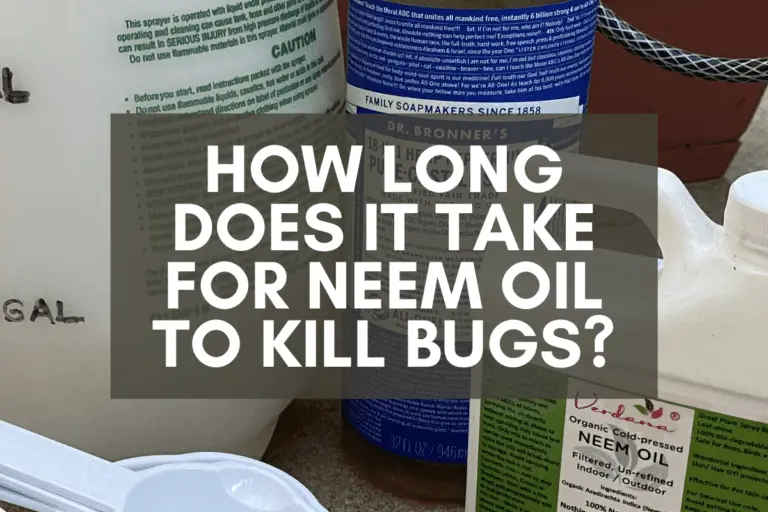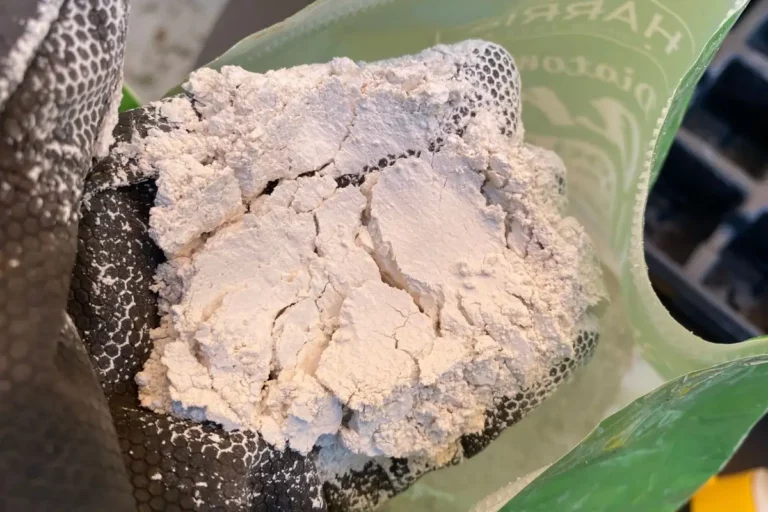9 Reasons Your Neem Oil Might Not Be Working
Have you heard about neem oil and giving it a try in your garden but haven’t seen the results you were expecting?
If so, this article is for you because in it, I’ve listed 9 things that could result in your neem oil not working properly, as well as additional tips and suggestions for gardeners interested in using something other than chemical insecticides.
In most cases, neem oil will take several days before it’ll begin killing off invasive pests. Plants must be sprayed thoroughly, including the undersides of all leaves, and neem oil must be applied every 4-7 days and stored in a cool, climate-controlled location to achieve maximum effectiveness.
If you’ve been spraying neem oil but haven’t seen a noticeable improvement in your garden, take a look at the 9 suggestions I’ve provided below as well as the additional tips you’ll find toward the end of this article.
1. You haven’t waited long enough.
As I’ve noted in this article on how long it takes neem oil to kill bugs, neem oil sprays do not kill insects on contact, in most instances. They must be ingested before they begin working, and even then, it’ll take 5-7 days before you’ll see any results.
If your neem oil isn’t working, when was the last time you applied it? If you haven’t waited a week or so, you’ll need to wait a bit longer.
I recommend using a calendar or calendar app to track your neem oil applications. That way, you won’t forget to apply it or unintentionally apply it too often.
If you accidentally spray too often, I wouldn’t worry too much about it. As I’ve suggested elsewhere, you don’t need to rinse neem oil off of plants. Just get back on schedule and use something that’ll remind you when to spray your plants.
2. You haven’t reapplied it at least once or twice.
Neem oil doesn’t work like chemical insecticides since, as I explained above, it’s not designed to kill bugs on impact. Instead, it coats the leaf in its chemical compounds, which bugs ingest when they chew or puncture the foliage.
Once ingested, the neem oil’s primary chemical compound (a naturally occurring chemical called azadirachtin) will begin harming bugs at the cellular level.
But this means that neem oil only impacts those insects that ingest it. If you overlooked or missed certain areas of your plants–or if bugs managed to hide safely underneath the plant’s leaves–there’s a good chance that they’ll avoid ingesting any neem-coated foliage and thus continue feeding and reproducing like normal.
I’ve rarely experienced success with just 1 neem oil spray. In most instances, you’ll need to spray neem oil once every 4-7 days for several weeks to knock out pesky infestations.
3. You’ve waited too long between applications.
When it’s mixed with water or exposed to the elements, neem oil begins to break down almost immediately.
In general, neem oil is most effective if used within a few hours of dilution. Once it’s sprayed on the plants, it’ll remain potent for roughly 4 days. After that, the neem oil won’t do much for you anymore, and you’ll need to reapply it.
If you haven’t seen the results you expected, how many days have recently elapsed between your neem oil applications? Are you reapplying neem oil every 4-7 days?
You shouldn’t overdo neem oil because, although it’s safe for pollinators, it can have negative impacts on certain beneficial bugs, but if you’re waiting too long between sprays, you’re giving invasive insects a chance to regroup and continue reproducing.

4. You didn’t spray your plants well enough.
When you spray your plants with neem oil, you’ve got to be sure to cover all of the foliage in a layer of soapy neem oil spray.
First and foremost, if you’re a beginner when it comes to using neem neem oil, check out my articles on using neem oil to kill spider mites and ways to make neem oil more effective.
But here’s something you’ve got to remember: You must spray in, around, and underneath all plant foliage. And that’s easier said than done.
There have been many times when I put my sprayer on either the fan or cone settings and then sprayed until my plants were dripping with neem oil. But when I looked closely, I noticed many leaves that didn’t have any neem oil on the undersides even though I had waved the nozzle around repeatedly while spraying from underneath the plant.
This is one reason why, as I noted above, you’ve got to reapply neem oil. Unless your plants are quite small, there’s a very good chance that you’ll miss some areas the first time you apply neem oil.
5. You diluted the concentrate too much.
As long as you’re paying attention to the label on the container and follow the instructions I’ve provided when it comes to making an effective neem oil spray, you shouldn’t have any problems mixing your neem oil concentrate with water and a soapy emulsifier.
But if you’re in a rush or aren’t paying close attention, you could accidentally dilute your neem oil too much.
If you do so, your neem oil spray will be much less effective, so be sure to mix everything properly and use it all immediately after you’ve mixed it. Once you dilute neem oil, it’s not going to last very long, so you should apply it to your plants within 1-2 hours.
6. You didn’t supplement with other treatments.
Let’s talk for a moment about another common mistake when it comes to neem oil, which is assuming that neem oil alone is enough to kill off invasive pests.
Sometimes this is true, and a once-a-week neem oil spray will take care of your problem.
But I’ve seen many instances where this just isn’t the case. The neem oil will initially knock the insects back, but without additional treatments, the bugs are so prolific that they simply continue reproducing despite initial setbacks.
This is especially the case if you’re battling aphids or spider mites, particularly the latter. If you’ve got spider mites in your garden, neem oil will definitely help, but it likely won’t solve your problem, which means it’s only a matter of time until the spider mites win.
I’ve dealt with this exact scenario in the past. In one instance, I only used neem oil, and the spider mites eventually won against my green bean plants. In another instance, in which I mixed up my treatment methods, I was able to save my tomato plants from spider mite destruction.
Here’s what I did differently in the second scenario: I sprayed neem oil once every 4-5 days, and on every intervening day between the neem oil treatments, I sprayed my plants with a soapy water spray.
In other words, for 2-3 weeks, I sprayed my infested plants every day. This is the best way I know of to stop an extreme spider mite infestation using only natural, organic products. If you let up and give spider mites an opening, they’ll take advantage of the opportunity to reproduce and spread further.
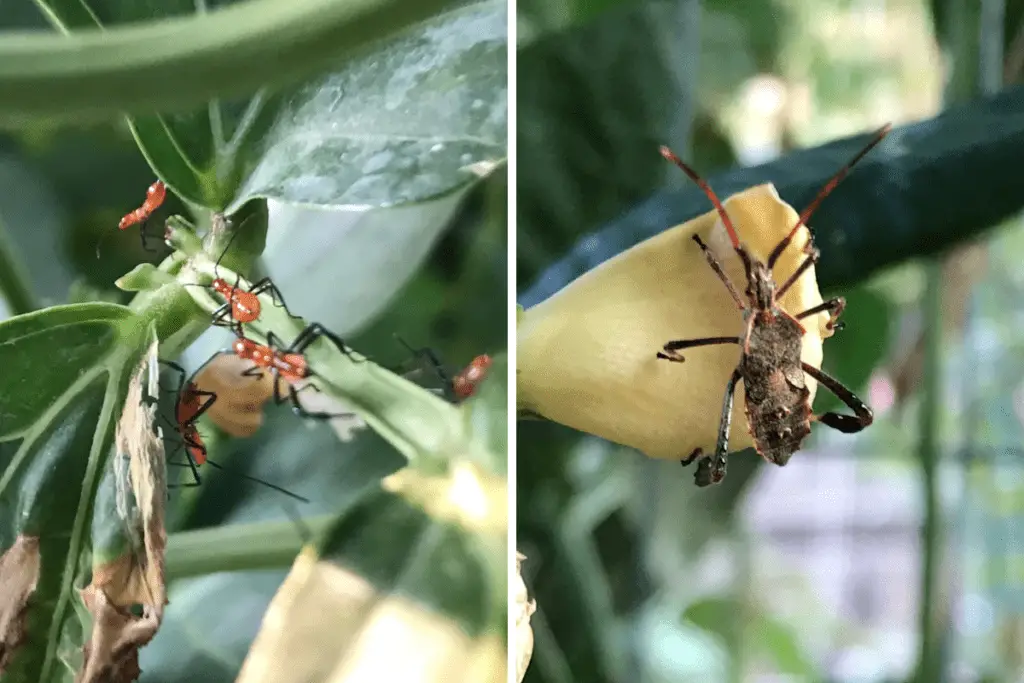
7. You used neem oil on tolerant bugs.
There’s another big reason why your neem oil spray might not be working: You’re using it on the wrong bugs.
Some insects can tolerate neem oil pretty well, including the adults of hard-bodied bugs such as leaf-footed bugs, squash bugs, and stink bugs. Quite a few caterpillars are also relatively unaffected by neem oil, which is why gardeners prefer to use BT on such bugs.
The key to using neem oil effectively is to identify the pests that are causing your problems, then see if those bugs can be found on my list of insects that are harmed or killed by neem oil.
If you’re having trouble identifying pests in your garden, I recommend joining one of the many Facebook insect groups that are out there since entomologists are often members of such groups. I’ve joined a few, and whenever I see a bug I can’t identify, I post a picture to the group, and I usually get an ID from someone within a day or so.
You can also do a reverse image search on Google or download a bug identification app, but I’ve found that Facebook insect groups provide more accurate information.
8. Your neem oil is past its prime.
I haven’t seen any studies that have looked at the effectiveness of neem oil as time goes on, but I know most retailers recommend using neem oil within one year after purchase.
If it looks like your neem oil isn’t working properly, I recommend taking a close look at the packaging and making sure that it’s not too old. I would also suggest doing so before you buy the product, or shortly thereafter, because it’s possible that you’ve purchased a container of neem oil that’s already 6 months old (or older).
However, even if your name oil is a bit old, that doesn’t mean it’s ineffective. It just means that you need to experiment with it.
From personal experience, I’ve used neem oil that’s 2 years old, and it seemed to work just fine on my tomato plants. I haven’t tested anything older than that, so I can’t say for sure how long it’ll last, but properly stored, it’ll likely stay good for at least a year (and possibly much longer).
9. Your neem oil hasn’t been stored properly.
To repeat what I suggested above: If you don’t store neem oil properly, it’s not going to last as long as you might want it to last.
Elsewhere on this site, I’ve shared my suggestions for storing neem oil properly, so I’ll keep it short here: You should store neem oil in a cool, climate-controlled space inside your house.
I know some people recommend storing neem oil in the refrigerator, but honestly, this is a pain in the you-know-what, and I sometimes wonder if the people who recommend storing it this way have ever actually stored it this way.
If you store neem oil in the fridge, it’ll solidify quickly, so when you want to use it, you’ll need to take it out and let it sit overnight. I’m also not convinced that storing neem oil in your refrigerator will extend its shelf life much longer than if you simply stored it in a cool place inside your house.
Please don’t store neem oil in the garage or in a shed or outdoor building. Instead, find a dark closet inside your home and leave it there.
If you do that, it’ll be ready whenever you need it. No waiting overnight. No postponing your garden treatment. Simply grab it out of the closet and pour what you need, then put it right back where you got it.
Long story short, if you’ve been seeing less-than-stellar results after spraying your plants with neem oil, I hope you’ll follow the suggestions above to make sure you’re getting the most out of your neem oil sprays.
To help you learn more about neem oil and its proper use, I’ve provided additional answers to common, related questions below. I hope this information will help you when it comes to purchasing, using, and storing neem oil.
How Long Does Neem Oil Take to Work?
If you’ve just sprayed your plants with neem oil, you’ll need to be patient and give the neem oil time to do its work.
Neem oil typically takes 4-5 days to kill off most pests, but it can sometimes take a week or more to see any improvements. For acute infestations, neem oil works best when it’s reapplied once every 4-7 days for a few weeks until the infestation is under control.
Neem oil will kill some bugs on contact, particularly young soft-bodied ones, but it typically takes a few days to begin killing off insects because the bugs must feed on the plant and thereby ingest the neem oil.
Only at that point will the azadirachtin begin impacting their biological systems and causing cellular damage.
How Do You Know If Neem Oil Is Working?
The key to understanding if neem oil is working is to keep a close eye on your plants, ideally at least once a day every day for a week after spraying.
If bug activity seems to have slowed down, that’s great news, but you should still probably reapply neem oil at least one more time to be safe.
If a week has passed, and your problem shows no signs of improvement—or if things appear to be getting worse—I recommend getting much more aggressive.
Begin applying neem oil once every 4 to 5 days. During the intervening days, mix up a soapy water spray and apply that once per day. Keep up this aggressive treatment until you’ve stopped the infestation, which means you’ll probably need to stick to this schedule for 2 to 3 weeks (possibly longer for extreme infestations).
I’ve found that I have to go to extreme measures when I’ve got an acute aphid or spider mite infestation. Those little pests are adept at hiding and avoiding neem oil sprays, so you’ve got to act aggressively whenever you see them.
What Do You Do When Neem Oil Doesn’t Work?
If you’ve been spraying your plants with neem oil, and you feel that it hasn’t been working, here’s what I suggest: Take a look at the advice above, then work through your problem step-by-step and ask yourself these questions:
- Have you waited long enough?
- Have you reapplied your neem oil at least 2-3 times?
- Do you thoroughly spray your plants with neem oil, including the undersides of all foliage?
- Did you mix your neem oil spray using my recipe (or a similar one)?
- Have you exposed the neem oil to hot temperatures by storing it outside, in a shed, or in your garage?
- Did you spray your plants with a soapy water solution in between neem oil treatments?
- Did you purchase your neem oil less than a year ago?
If you answered “no” to any of these questions, I recommend re-reading my suggestions above, then determining if any mistakes were made and thinking about what you might do differently next time.
Additional Information
If you’ve been having trouble using neem oil, I recommend learning as much as you can about this powerful natural insecticide.
I’ve written numerous articles on the subject, so I recommend starting with these:

